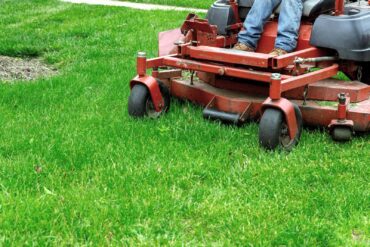 Spring is coming, and as we get out our lawn mowers and other outdoor power equipment from storage to work in our yards, businesses and other green spaces, it’s important to put safe practices in place.
Spring is coming, and as we get out our lawn mowers and other outdoor power equipment from storage to work in our yards, businesses and other green spaces, it’s important to put safe practices in place.
“Think safety first,” says Kris Kiser, president and CEO of the Outdoor Power Equipment Institute (OPEI), an international trade association representing outdoor power equipment, small engine, utility vehicle, golf car and personal transport vehicle manufacturers and suppliers. “We’re all eager to get back outside in the spring weather but I can’t stress enough to read your owner’s manuals before starting up any equipment — especially your lawn mower.”
OPEI offers these tips to get your outdoor power equipment ready, especially mowers:
Know not all lawn mowers are the same.
Whether your mower is a garden tractor, zero-turn mower or other, it has a unique design, requirements, weight classification and other differences that impact how to use it safely. The newest machines have the latest safety standards.
Know your specific machine.
Many mowers may look similar but the technology is ever evolving, with advancing safety systems. They vary in design, power supply, performance, operating parameters and more. Your manufacturer-supplied owner’s manual will guide you in these differences. Read your owner’s manual.
When using mowers on slopes follow the manufacturer’s guidance to the letter.
Do not disable or alter manufacturer-installed safety equipment.
Walk your yard before mowing.
Slopes, wet grass and weather may impact the equipment’s performance, as well as safe handling procedures. Pick up sticks and limbs that may have fallen to the ground over the winter and any loose objects that could be hit by a mower. Inspect trees for damaged limbs that may get in your way when mowing.
Look over equipment before use.
Check the air filter, oil level and gasoline tank. Watch for loose belts and missing or damaged parts. Replace any parts needed or take your equipment to a qualified service representative. Check to be sure that you have the appropriate, manufacturer-recommended batteries, if needed.
Protect your power.
Use only E10 or less fuel in gasoline-powered outdoor power equipment if it is not designed for higher ethanol blends. Add a fuel stabilizer if you don’t use up all the fuel in the tank right away. Burn off any fuel before storing the mower more than 30 days. Also, for battery-powered equipment, only use battery packs specified by the manufacturer. Follow all charging instructions as outlined in the owner’s manual. Be sure to store fuel and batteries safely. Keep batteries away from other metal objects, store them in a climate-controlled area, and never stack batteries.
Keep children and pets away from machines during operation.
Keep your mower clean.
It will run more efficiently and last longer. Always remove dirt, oil or grass before using and storing, and store equipment in a dry place, avoiding damp or wet environments.
For information on safe fueling, go to www.LookBeforeYouPump.com.
For more safety information visit www.opei.org.























